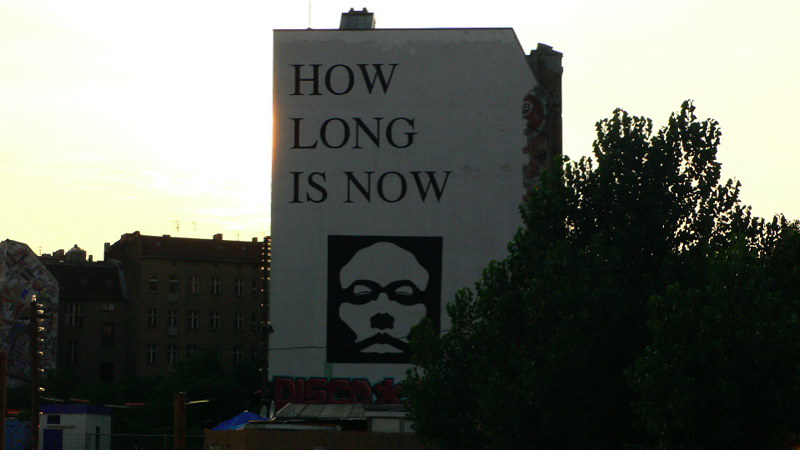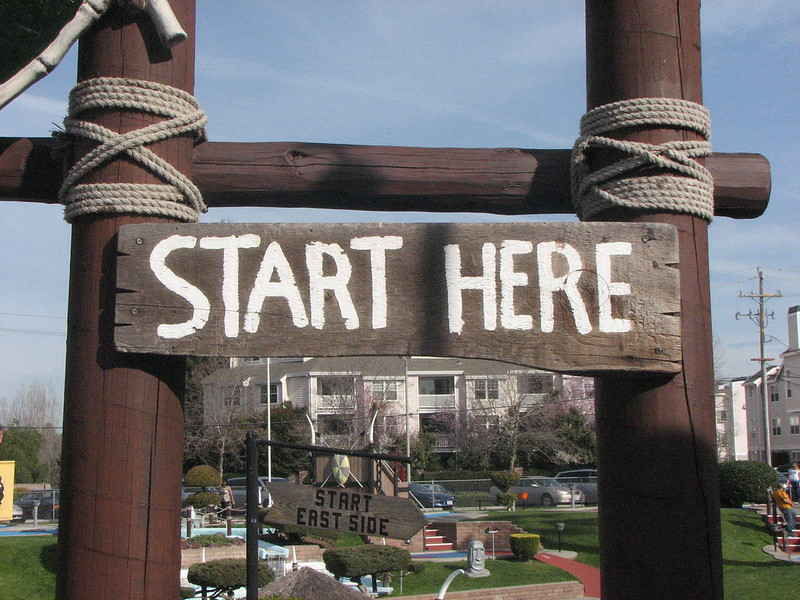Archive for the ‘Fundementals’ Category
Run toward the action!
 Companies have control over one thing: how to allocate their resources. Companies allocate resources by deciding which projects to start, accelerate, and stop; whom to allocate to the projects; how to go about the projects; and whom to hire, invest in, and fire. That’s it.
Companies have control over one thing: how to allocate their resources. Companies allocate resources by deciding which projects to start, accelerate, and stop; whom to allocate to the projects; how to go about the projects; and whom to hire, invest in, and fire. That’s it.
Taking a broad view of project selection to include starting, accelerating, and stopping projects, as a leader, what is your role in project selection, or, at a grander scale, initiative selection? When was the last time you initiated a disruptive yet heretical new project from scratch? When was the last time you advocated for incremental funding to accelerate a floundering yet revolutionary project? When was the last time you stopped a tired project that should have been put to rest last year? And because the projects are the only thing that generates revenue for your company, how do you feel about all that?
Without your active advocacy and direct involvement, it’s likely the disruptive project won’t see the light of day. Without you to listen to the complaints of heresy and actively disregard them, the organization will block the much-needed disruption. Without your brazen zeal, it’s likely the insufficiently-funded project won’t revolutionize anything. Without you to put your reputation on the line and decree that it’s time for a revolution, the organization will starve the project and the revolution will wither. Without your critical eye and thought-provoking questions, it’s likely the tired project will limp along for another year and suck up the much-needed resources to fund the disruptions, revolutions, and heresy.
Now, I ask you again. How do you feel about your (in)active (un)involvement with starting projects that should be started, accelerating projects that should be accelerated, and stopping projects that should be stopped?
And with regard to project staffing, when was the last time you stepped in and replaced a project manager who was over their head? Or, when was the last time you set up a recurring meeting with a project manager whose project was in trouble? Or, more significantly, when was the last time you cleared your schedule and ran toward the smoke of an important project on fire? Without your involvement, the over-their-head project manager will drown. Without your investment in a weekly meeting, the troubled project will spiral into the ground. Without your active involvement in the smoldering project, it will flame out.
As a leader, do you have your fingers on the pulse of the most important projects? Do you have the knowledge, skills, and abilities to know which projects need help? And do you have the chops to step in and do what must be done? And how do you feel about all that?
As a leader, do you know enough about the work to provide guidance on a major course change? Do you know enough to advise the project team on a novel approach? Do you have the gumption to push back on the project team when they don’t want to listen to you? As a leader, how do you feel about that?
As a leader, you probably have direct involvement in important hiring and firing decisions. And that’s good. But, as a leader, how much of your time do you spend developing young talent? How many hours per week do you talk to them about the details of their projects and deliverables? How many hours per week do you devote to refactoring troubled projects with the young project managers? And how do you feel about that?
If you want to grow revenue, shape the projects so they generate more revenue. If you want to grow new businesses, advocate for projects that create new businesses. If you need a revolution, start revolutionary projects and protect them. And if you want to accelerate the flywheel, help your best project managers elevate their game.
“Speeding Pinscher” by PincasPhoto is licensed under CC BY 2.0
If you “don’t know,” you’re doing it right.
 If you know how to do it, it’s because you’ve done it before. You may feel comfortable with your knowledge, but you shouldn’t. You should feel deeply uncomfortable with your comfort. You’re not trying hard enough, and your learning rate is zero.
If you know how to do it, it’s because you’ve done it before. You may feel comfortable with your knowledge, but you shouldn’t. You should feel deeply uncomfortable with your comfort. You’re not trying hard enough, and your learning rate is zero.
Seek out “don’t know.”
If you don’t know how to do it, acknowledge you don’t know, and then go figure it out. Be afraid, but go figure it out. You’ll make mistakes, but without mistakes, there can be no learning.
No mistakes, no learning. That’s a rule.
If you’re getting pressure to do what you did last time because you’re good at it, well, you’re your own worst enemy. There may be good profits from a repeat performance, but there is no personal growth.
Why not find someone with “don’t know” mind and teach them?
Find someone worthy of your time and attention and teach them how. The company gets the profits, an important person gets a new skill, and you get the satisfaction of helping someone grow.
No learning, no growth. That’s a rule.
No teaching, no learning. That’s a rule, too.
If you know what to do, it’s because you have a static mindset. The world has changed, but you haven’t. You’re walking an old cowpath. It’s time to try something new.
Seek out “don’t know” mind.
If you don’t know what to do, it’s because you recognize that the old way won’t cut it. You know have a forcing function to follow. Follow your fear.
No fear, no growth. That’s a rule.
Embrace the “don’t know” mind. It will help you find and follow your fear. And don’t shun your fear because it’s a leading indicator of novelty, learning, and growth.
“O OUTRO LADO DO MEDO É A LIBERDADE (The Other Side of the Fear is the Freedom)” by jonycunha is licensed under CC BY-SA 2.0
Taking vacations and holidays are the most productive things you can do.
 It’s not a vacation unless you forget about work.
It’s not a vacation unless you forget about work.
It’s not a holiday unless you leave your phone at home.
If you must check-in at work, you’re not on vacation.
If you feel guilty that you did not check-in at work, you’re not on holiday.
If you long for work while you’re on vacation, do something more interesting on vacation.
If you wish you were at work, you get no credit for taking a holiday.
If people know you won’t return their calls, they know you are on vacation.
If people would rather make a decision than call you, they know you’re on holiday.
If you check your voicemail, you’re not on vacation.
If you check your email, you’re not on holiday.
If your company asks you to check-in, they don’t understand vacation.
If people at your company invite you to a meeting, they don’t understand holiday.
Vacation is productive in that you return to work and you are more productive.
Holiday is not wasteful because when you return to work you don’t waste time.
Vacation is profitable because when you return you make fewer mistakes.
Holiday is skillful because when you return your skills are dialed in.
Vacation is useful because when you return you are useful.
Holiday is fun because when you return you bring fun to your work.
If you skip your vacation, you cannot give your best to your company and to yourself.
If neglect your holiday, you neglect your responsibility to do your best work.
Don’t skip your vacation and don’t neglect your holiday. Both are bad for business and for you.
“CatchingButterflies on Vacation” by OakleyOriginals is licensed under CC BY 2.0
Some Problems With Problems
 If you don’t know what the problem is, that’s your first problem.
If you don’t know what the problem is, that’s your first problem.
A problem can’t be a problem unless there’s a solution. If there’s no possible solution, don’t try to solve it, because it’s not a problem.
If there’s no problem, you have a big problem.
If you’re trying to solve a problem, but the solution is outside your sphere of influence, you’re taking on someone else’s problem.
If someone tries to give you a gift but you don’t accept it, it’s still theirs. It’s like that with problems.
If you want someone to do the right thing, create a problem for them that, when solved, the right thing gets done.
Problems are good motivators and bad caretakers.
A problem is between two things, e.g., a hammer and your thumb. Your job is to figure out the right two things.
When someone tries to give you their problem, keep your hands in your pockets.
A problem can be solved before it happens, while it happens, or after it happened. Each time domain has different solutions, different costs, and different consequences. Your job is to choose the most appropriate time domain.
If you have three problems, solve one at a time until you’re done.
Solving someone else’s problem is a worst practice.
If you solve the wrong problem, you consume all the resources needed to solve the right problem without any of the benefits of solving it.
Ready, fire, aim is no way to solve problems.
When it comes to problems, defining IS solving.
If you learn one element of problem-solving, learn to see when someone is trying to give you their problem.
“My first solved Rubik’s cube” by Nina Stawski is licensed under CC BY 2.0
Why not now?
 If you are anxious, you’re worried about what might happen. You’re living in the future. If you are sad or angry, you’re reacting to what happened. You’re living in the past. Nothing can be accomplished when living in the past because the die is cast. And nothing can be accomplished when living in the future because it’s all in your head. The only time we have is now.
If you are anxious, you’re worried about what might happen. You’re living in the future. If you are sad or angry, you’re reacting to what happened. You’re living in the past. Nothing can be accomplished when living in the past because the die is cast. And nothing can be accomplished when living in the future because it’s all in your head. The only time we have is now.
The only time to start is now. Even if your project is a short one, you’re in a day-for-day slip with your completion date for every day you don’t start. And this is doubly true for long projects. If you’re living in the past, you block yourself from starting because the last project was difficult, you didn’t have the resources or it didn’t come out as expected, and you want to protect yourself from a rerun. If you’re living in the past, you block yourself from starting because you don’t know how it will turn out, you don’t have all the answers, you don’t have sufficient resources, and you don’t know what you don’t know. Acknowledge the problems with the past and potential problems with the future, and start anyway.
Starting starts with starting.
The only time to say something is now. If you’re living in the past, you block yourself from saying something controversial or thought-provoking because you remember how it went the last time someone did that. If you’re living in the future, you prevent yourself from saying something radical because, well, you weren’t paying attention and missed your opportunity to change history. Acknowledge that there may be some blowback for your insightful comments, live in the now and say them anyway. And live in the now so you can pay attention and use your sharp wit to create the future.
If you don’t say something, nothing is ever said.
The only time to help is now. Living in the past, you block yourself from understanding the significance of the situation because you see it through old lenses. Living in the future, you block yourself from helping because you worry if the helping will help or worry the helping will get in the way of your future commitments. If someone needs help, help them now. They will understand that the outcome is uncertain, and they’re okay with that. In fact, they will be happy you recognized their troubling situation and made time to check in with them. When you live in the now, people appreciate it. The time to help is now.
When no one helps, no one is helped.
When you find yourself living in the past, close your eyes, recognize your anger or sadness, and focus on your breath for ten seconds. And if that doesn’t work, put your hand on your chest and do it again. And if that doesn’t work, tell yourself your sadness is temporary and do it again. This is a fail-safe way to bring yourself into the now. Then, sitting in the now, start that project, say what must be said, and help people.
And when you find yourself living in the future, close your eyes, recognize your anxiety, and focus on your breath for ten seconds. And if that doesn’t work, put your hand on your chest and do it again. And if that doesn’t work, tell yourself your anxiety is temporary and repeat. This will bring you into the now. Then, sitting in the now, start that project, say what must be said, and help people.
The only time to shape the future is now.
“HOW LONG IS NOW” by dr. motte is licensed under CC BY 2.0
How do you measure your people?
 We get what we measure and, generally, we measure what’s easy to measure and not what will build a bridge to the right behavior.
We get what we measure and, generally, we measure what’s easy to measure and not what will build a bridge to the right behavior.
Timeframe. If we measure people on a daily pitch, we get behavior that is maximized over eight hours. If a job will take nine hours, it won’t get done because the output metrics would suffer. It’s like a hundred-meter sprint race where the stopwatch measures output at one hundred meters. The sprinter spends all her energy sprinting one hundred meters and then collapses. There’s no credit for running further than one hundred meters, so they don’t. Have you ever seen a hundred-meter race where someone ran two hundred meters?
Do you want to sprint one hundred meters five days a week? If so, I hope you only need to run five hundred meters. Do you want to run twenty-five miles per week? If so, you should slow down and run five miles per day for five days. You can check in every day to see if the team needs help and measure their miles on Friday afternoon. And if you want the team to run six miles a day, well, you probably have to allocate some time during the week so they can get stronger, improve their running stride, and do preventative maintenance on their sneakers. For several weeks prior to running six miles a day, you’ve got to restrict their running to four miles a day so they have time to train. In that way, your measurement timeframe is months, not days.
Over what timeframe do you measure your people? And, how do you feel about that?
Control Volume. If you have a fish tank, that’s the control volume (CV) for the fish. If you have two fish tanks, you two control volumes – control volume 1 (CV1) and control volume 2 (CV2). With two control volumes, you can optimize each control volume independently. If tank 1 holds red fish and tank 2 holds blue fish, based on the number of fish in the tanks, you put the right amount of fish food in tank 1 for the red fish and the right amount in tank 2 for the blue fish. The red fish of CV1 live their lives and make baby fish using the food you put in CV1. And to measure their progress, you count the number of red fish in CV1 (tank 1). And it’s the same for the blue fish in CV2.
With the two CVs, you can dial in the recipe to grow the most red fish and dial in a different recipe to grow blue fish. But what if you don’t have enough food for both tanks? If you give more food to the blue fish and starve the red fish, the red fish will get angry and make fewer baby fish. And they will be envious of the blue fish. And, likely, the blue fish will gloat. When CV1 gets fewer resources than CV2, the fish notice.
But what if you want to make purple fish? That would require red fish to jump into the blue tank and even more food to shift from CV1 to CV2. Now the red fish in CV1 are really pissed. And though the red fish moved to tank 2 do their best to make purple guppies with the blue fish, neither color know how to make purple fish. They were never given the tools, time, and training to do this new work. And instead of making purple guppies, usually, they eat each other.
We measure our teams over short timeframes and then we’re dissatisfied when they can’t run marathons. It’s time to look inside and decide what you want. Do you want short-term performance or long-term performance? And, no, you can’t have both from the same team.
And we measure our teams on the output of their control volumes and yet ask them to cooperate and coordinate across teams. That doesn’t work because any effort spent to help another control volume comes at the expense of your own. And the fish know this. And we don’t give them the tools, time, and training to work across control volumes. And the fish know this, too.
“Purple fish” by The Dress Up Place is licensed under CC BY-SA 2.0
The Illusion of Control
 Unhappy: When you want things to be different than they are.
Unhappy: When you want things to be different than they are.
Happy: When you accept things as they are.
Sad: When you fixate on times when things turned out differently than you wanted.
Neutral: When you know you have little control over how things will turn out.
Anxious: When you fixate on times when things might turn out differently than you want.
Stressed: When you think you have control over how things will turn out.
Relaxed: When you know you don’t have control over how things will turn out.
Agitated: When you live in the future.
Calm: When you live in the present.
Sad: When you live in the past.
Angry: When you expect a just world, but it isn’t.
Neutral: When you expect that it could be a just world, but likely isn’t.
Happy: When you know it doesn’t matter if the world is just.
Angry: When others don’t meet your expectations.
Neutral: When you know your expectations are about you.
Happy: When you have no expectations.
Timid: When you think people will judge you negatively.
Neutral: When you think people may judge you negatively or positively.
Happy: When you know what people think about you is none of your business.
Distracted: When you live in the past or future.
Focused: When you live in the now.
Afraid of change: When you think all things are static.
Accepting change: When you know all things are dynamic.
Intimidated: When you think you don’t meet someone’s expectations.
Confident: When you know you did your best.
Uncomfortable: When you want things to be different than they are.
Comfortable: When you know the Universe doesn’t care what you think.
“Space – Antennae Galaxies” by Trodel is licensed under CC BY-SA 2.0
Musings on Skillfulness
 Best practices are good, but dragging projects over the finish line is better.
Best practices are good, but dragging projects over the finish line is better.
Alignment is good, but not when it’s time for misalignment.
Short-term thinking is good, as long as it’s not the only type of thinking.
Reuse of what worked last time is good, as long as it’s bolstered by the sizzle of novelty.
If you find yourself blaming the customer, don’t.
People that look like they can do the work don’t like to hang around with those that can do it.
Too much disagreement is bad, but not enough is worse.
The Status Quo is good at repeating old recipes and better at squelching new ones.
Using your judgment can be dangerous, but not using it can be disastrous.
It’s okay to have some fun, but it’s better to have more.
If it has been done before, let someone else do it.
When stuck on a tricky problem, make it worse and do the opposite.
The only thing worse than using bad judgment is using none at all.
It can be problematic to say you don’t know, but it can be catastrophic to behave as if you do.
The best way to develop good judgment is to use bad judgment.
When you don’t know what to do, don’t do it.
“Old Monk” by anahitox is licensed under CC BY 2.0
What should we do next?
 Anonymous: What do you think we should do next?
Anonymous: What do you think we should do next?
Me: It depends. How did you get here?
Anonymous: Well, we’ve had great success improving on what we did last time.
Me: Well, then you’ll likely do that again.
Anonymous: Do you think we’ll be successful this time?
Me: It depends. If the performance/goodness has been flat over your last offerings, then no. When performance has been constant over the last several offerings it means your technology is mature and it’s time for a new one. Has performance been flat over the years?
Anon: Yes, but we’ve been successful with our tried-and-true recipe and the idea of creating a new technology is risky.
Me: All things have a half-life, including successful business models and long-in-the-tooth technologies, and your success has blinded you to the fact that yours are on life support. Developing a new technology isn’t risky. What’s risk is grasping tightly to a business model that’s out of gas.
Anon: That’s harsh.
Me: I prefer “truthful.”
Anon: So, we should start from scratch and create something altogether new?
Me: Heavens no. That would be a disaster. Figure out which elements are blocking new functionality and reinvent those. Hint: look for the system elements that haven’t changed in a dog’s age and that are shared by all your competitors.
Anon: So, I only have to reinvent several elements?
Me: Yes, but probably fewer than several. Probably just one.
Anon: What if we don’t do that?
Me: Over the next five years, you’ll be successful. And then in year six, the wheels will fall off.
Anon: Are you sure?
Me: No, they could fall off sooner.
Anon: How do you know it will go down like that?
Me: I’ve studied systems and technologies for more than three decades and I’ve made a lot of mistakes. Have you heard of The Voice of Technology?
Anon: No.
Me: Well, take a bite of this – The Voice of Technology. Kevin Kelly has talked about this stuff at great length. Have you read him?
Anon: No.
Me: Here’s a beauty from Kevin – What Technology Wants. How about S-curves?
Anon: Nope.
Me: Here’s a little primer – Beyond Dead Reckoning. How about Technology Forecasting?
Anon: Hmm. I don’t think so.
Me: Here’s something from Victor Fey, my teacher. He worked with Altshuller, the creator of TRIZ – Guided Technology Evolution. I’ve used this method to predict several industry-changing technologies.
Anon: Yikes! There’s a lot here. I’m overwhelmed.
Me: That’s good! Overwhelmed is a sign you realize there’s a lot you don’t know. You could be ready to become a student of the game.
Anon: But where do I start?
Me: I’d start Wardley Maps for situation analysis and LEANSTACK to figure out if customers will pay for your new offering.
Anon: With those two I’m good to go?
Me: Hell no!
Anon: What do you mean?
Me: There’s a whole body of work to learn about. Then you’ve got to build the organization, create the right mindset, select the right projects, train on the right tools, and run the projects.
Anon: That sounds like a lot of work.
Me: Well, you can always do what you did last time. END.
“he went that way matey” by jim.gifford is licensed under CC BY-SA 2.0
Just start.
 You’re not missing anything. It’s time to start.
You’re not missing anything. It’s time to start.
Afraid to fail? Start anyway.
Don’t have the experience? Well, you won’t be able to say that once you start.
Just start. It’s time.
Don’t have the money? Start small. And if that won’t work, start smaller.
Start small, but start.
Worried about what people might say? There’s only one way to know, so you might as well start.
You’re not an imposter. It’s time to start.
Waiting isn’t waiting, it’s a rationalization to block yourself from starting.
Here’s a rule: If you don’t start you can’t finish.
The only thing in the way of starting is starting.
The fear of success is the strongest stopper of starting. Be afraid of success, and start.
There’s never a good time to start, but there’s always a best time – now.
Worried about the negative consequences of starting? Be worried, and start.
Don’t think you have what it takes? The only way to know for sure is to start.
There’s no way around it. Starting starts with starting.
“Golfland start” by twid is licensed under CC BY-SA 2.0
It’s time to start starting.
 What do we do next? I don’t know
What do we do next? I don’t know
What has been done before?
What does it do now?
What does it want to do next?
If it does that, who cares?
Why should we do it? I don’t know.
Will it increase the top line? If not, do something else.
Will it increase the bottom line? If so, let someone else do it.
What’s the business objective?
Who will buy it? I don’t know.
How will you find out?
What does it look like when you know they’ll buy it?
Why do you think it’s okay to do the work before you know they’ll buy it?
What problem must be solved? I don’t know.
How will you define the problem?
Why do you think it’s okay to solve the problem before defining it?
Why do you insist on solving the wrong problem? Don’t you know that ready, fire, aim is bad for your career?
Where’s the functional coupling? When will you learn about Axiomatic Design?
Where is the problem? Between which two system elements?
When does the problem happen? Before what? During what? After what?
Will you separate in time or space?
When will you learn about TRIZ?
Who wants you to do it? I don’t know.
How will you find out?
When will you read all the operating plans?
Why do you think it’s okay to start the work before knowing this?
Who doesn’t want you to do it? I don’t know.
How will you find out?
Who looks bad if this works?
Who is threatened by the work?
Why do you think it’s okay to start the work before knowing this?
What does it look like when it’s done? I don’t know.
Why do you think it’s okay to start the work before knowing this?
What do you need to be successful? I don’t know.
Why do you think it’s okay to start the work before knowing this?
Starting is essential, but getting ready to start is even more so.
Image credit — Jon Marshall
 Mike Shipulski
Mike Shipulski